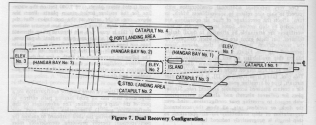The Arleigh Burke destroyer weighs 10,000 tons and has 140,000 hp.
The Nimitz carrier weighs 100,000 tons and has 280,000 hp.
This seems very counter intuitive.
Water resistance is mainly proportional to the cross-sectional area of the bow which ploughs into the water.
I find it confusing that a ship can weigh 10 times as much but only has 2 times the horsepower. I always thought if a ship weighed 10 times as much then maybe it should have 4 times the horsepower. I find this confusing.
Anyways lets assume these numbers are accurate.
Suppose a carrier never travels alone and is always escorted by 8 destroyers. Therefore one carrier battle group would have a combined power of 1,400,000 hp. That is 280,000 hp of nuclear power and 1,120,000 hp of diesel power. Look at it this way a carrier battle group has 20% hp of nuclear power and 80% hp of diesel power.
What am I getting at?
The fuel savings of going "nuclear" for a carrier seems very small considering it only makes up 20% of the battle group.
Am I onto something or am I missing something?
I'd say a US carrier is usually escorted by 4-5 destroyers, and not all of them need to run at flank speed all the time, particularly the pickets.
The last Chinese CSG model I did had the following fuel consumption figures for combat operations:
Conventional Carrier Propulsion = 800-1000 Tonnes per day
Conventional Carrier Air ops = 600 Tonnes per day
Escort Propulsion = 550 Tonnes per day
So it looks like you can cut liquid consumption by roughly 41-46% by having a nuclear carrier. At the same time, a nuclear carrier carries a lot more fuel for air ops or the escorts to use.

